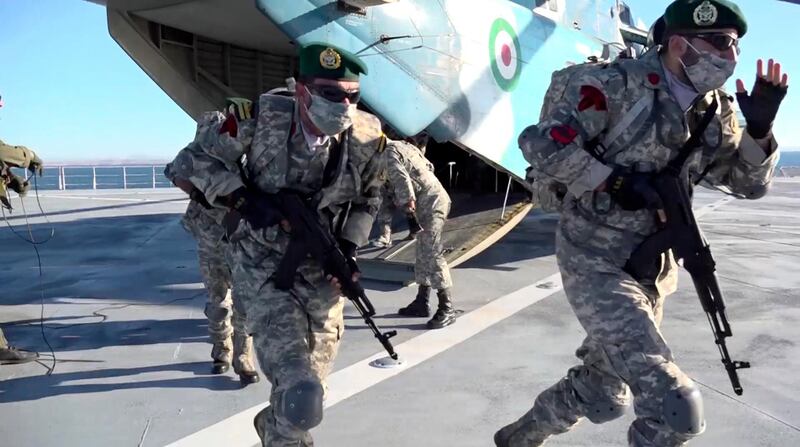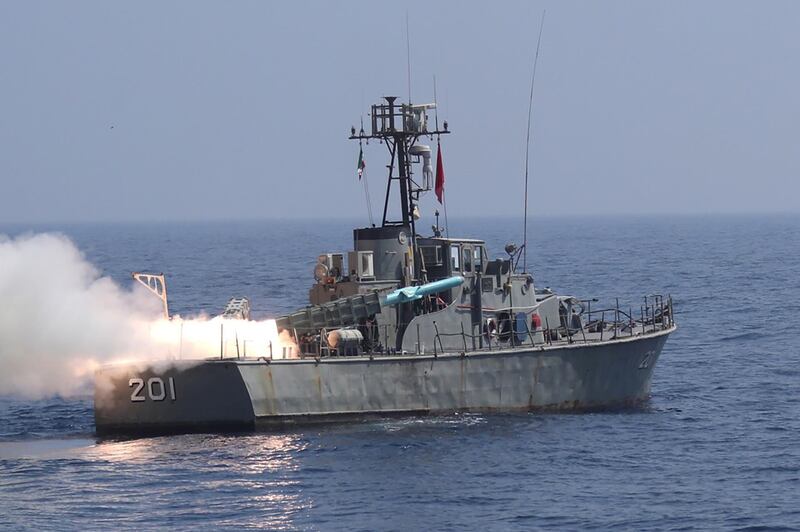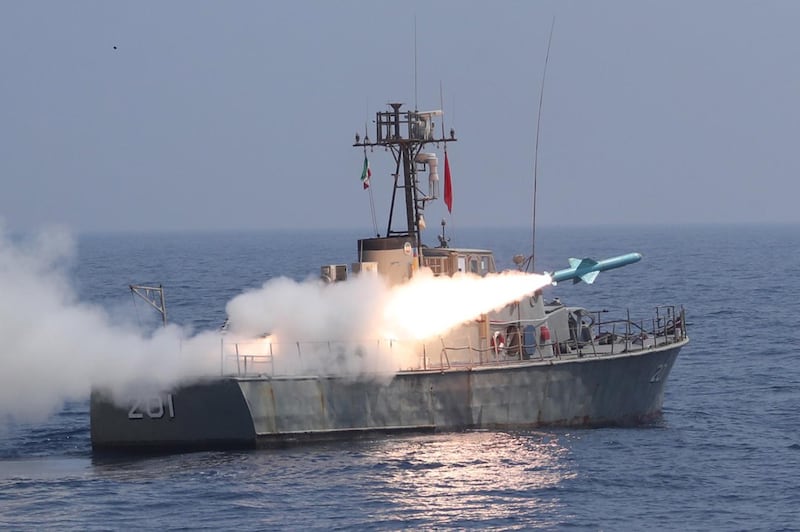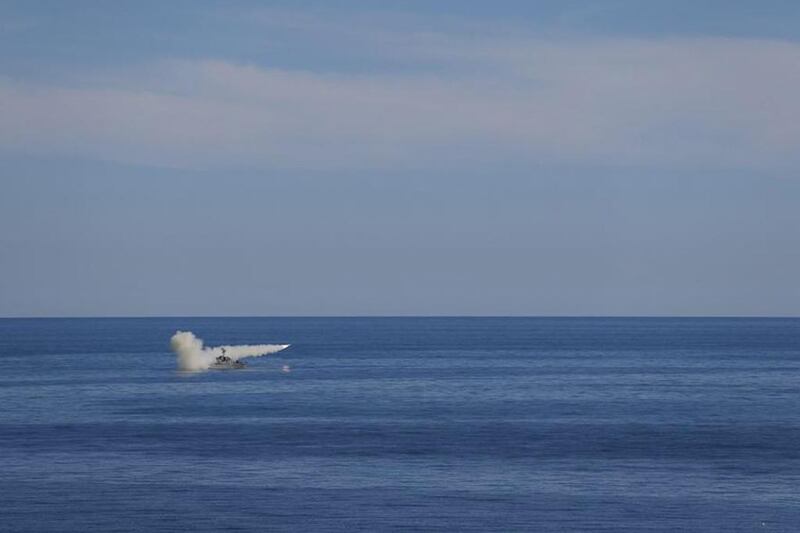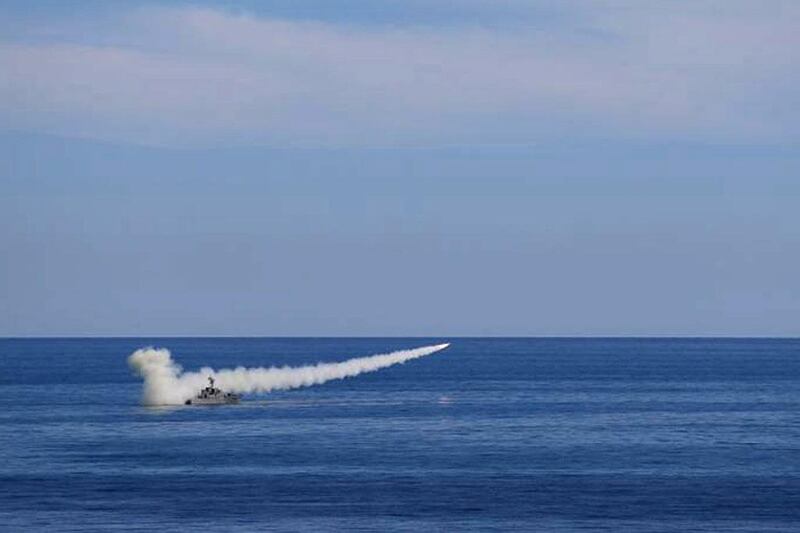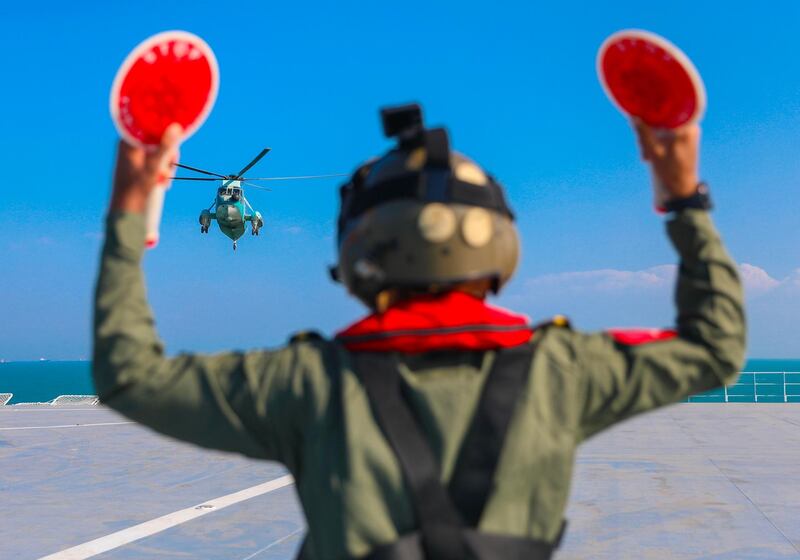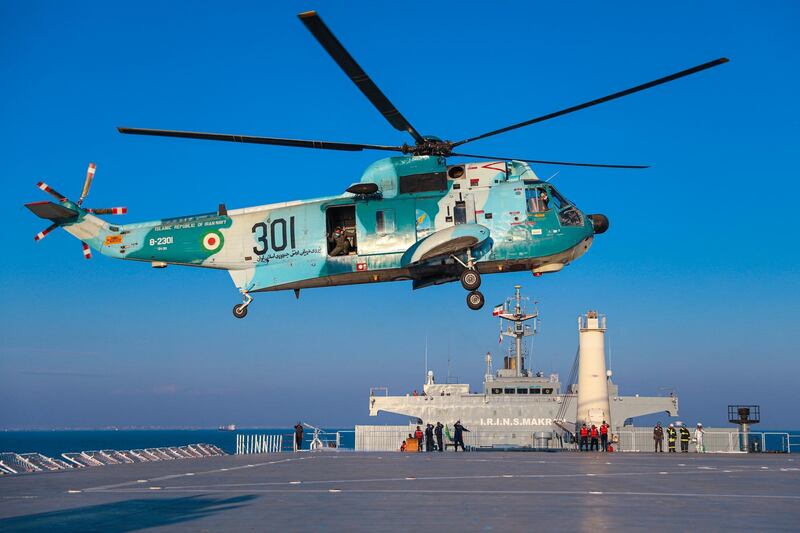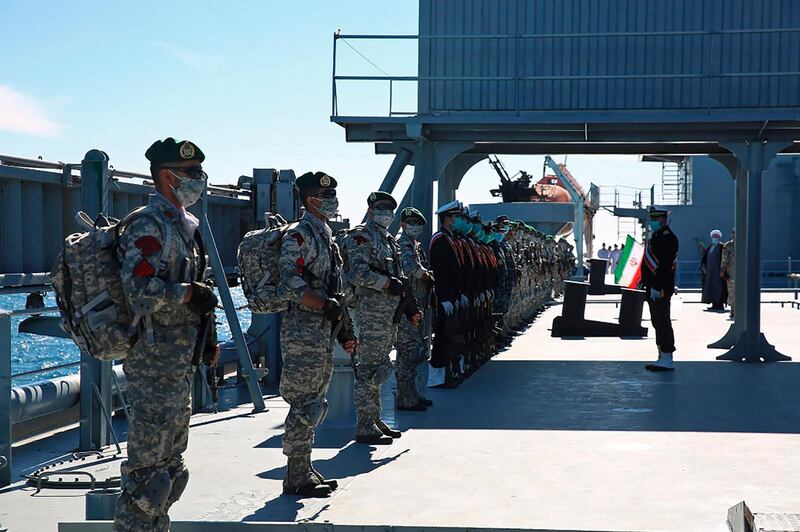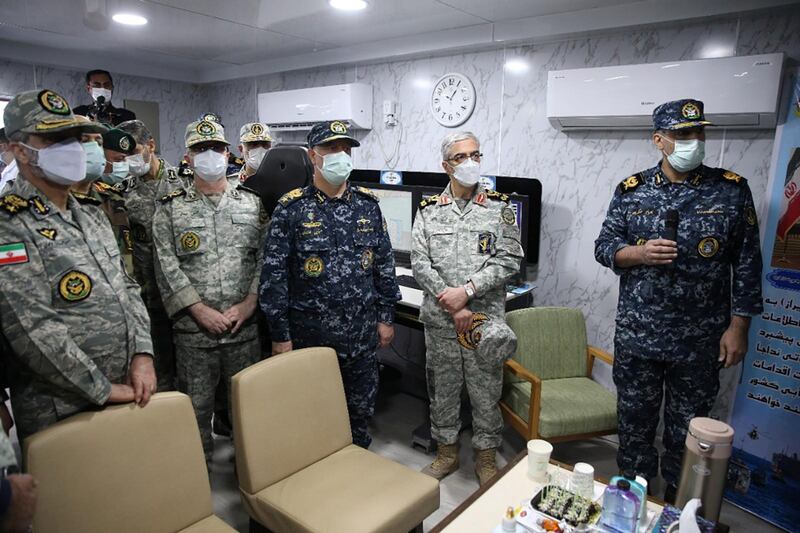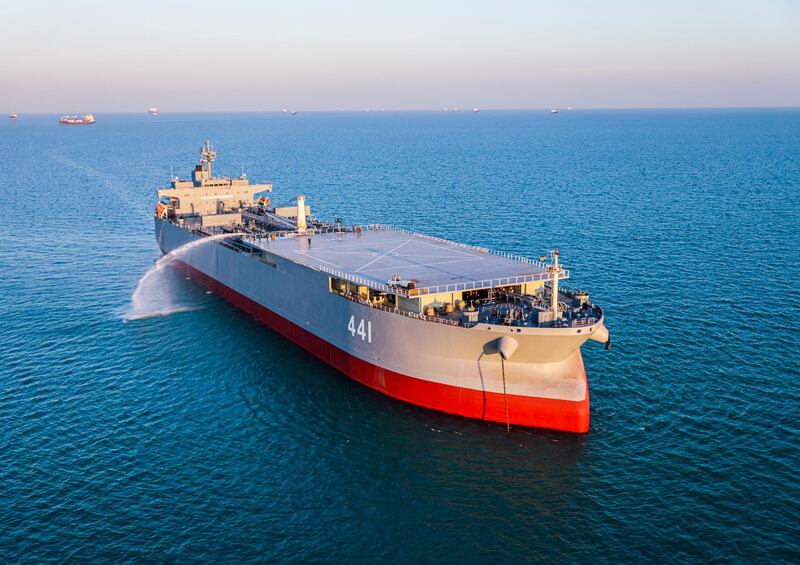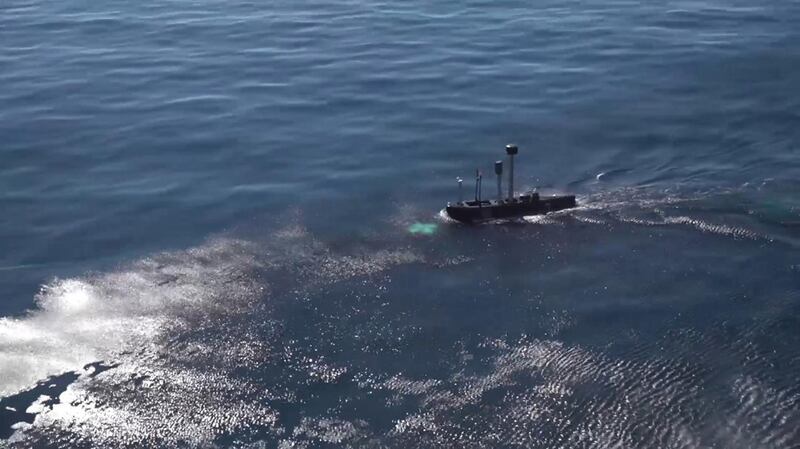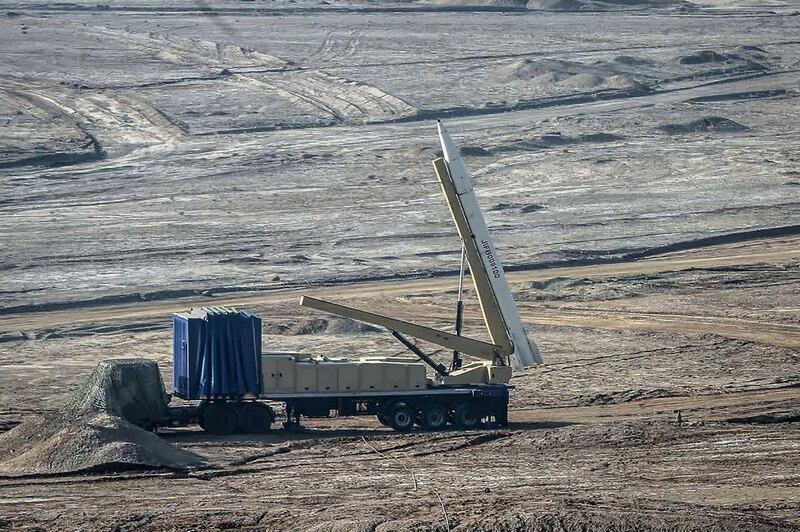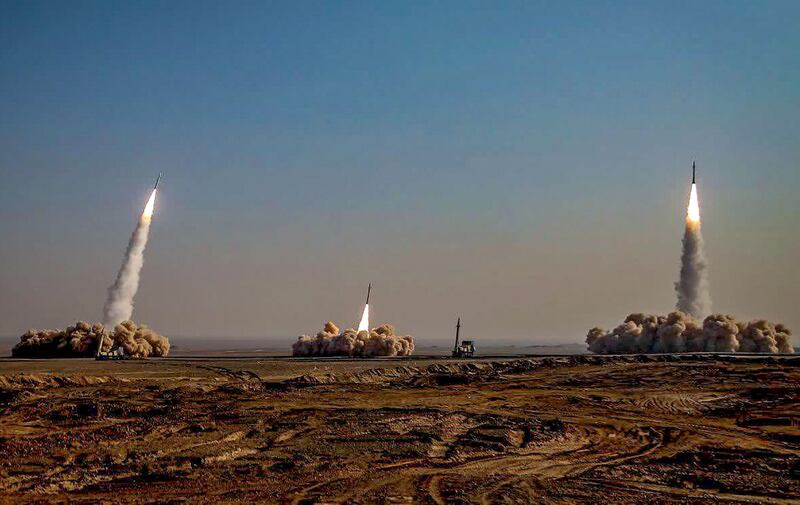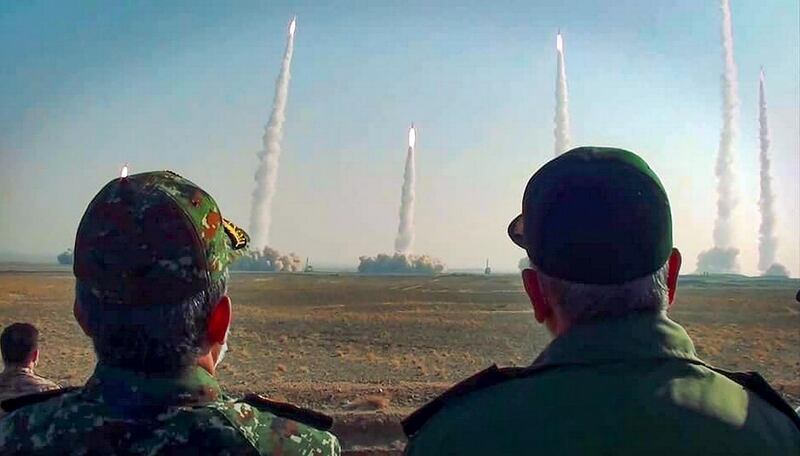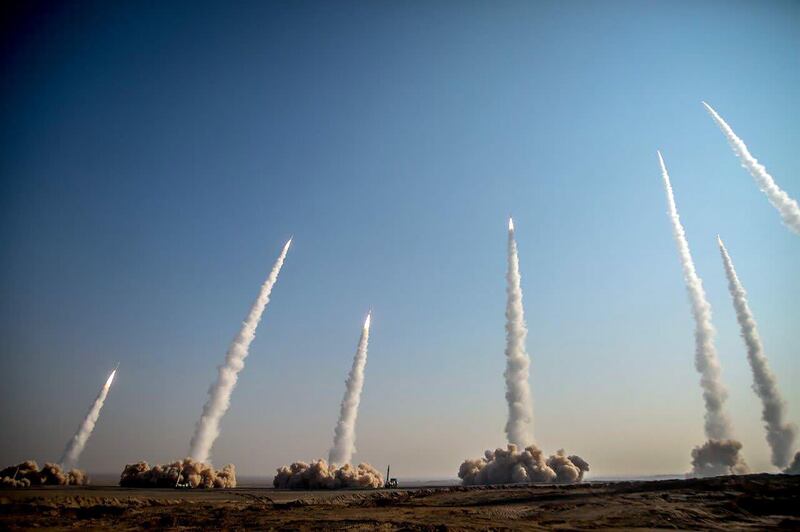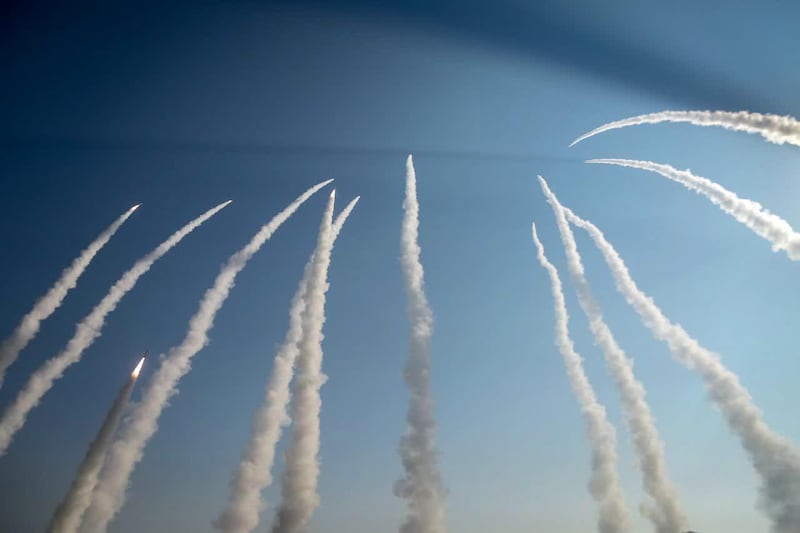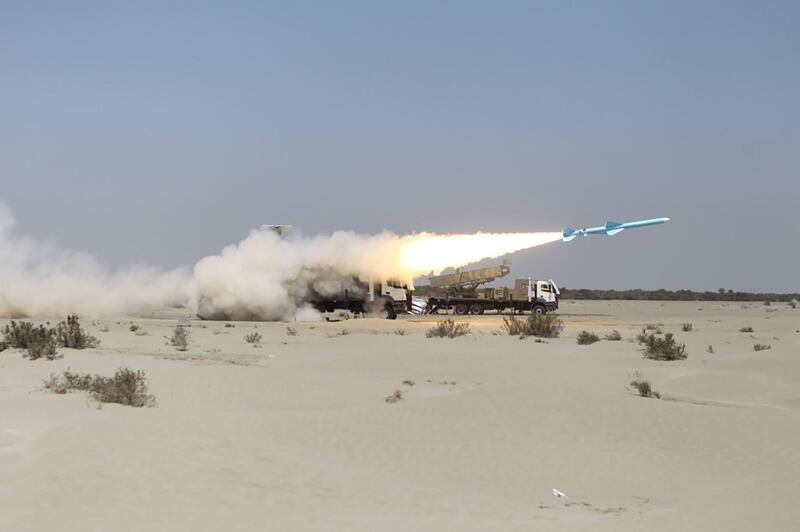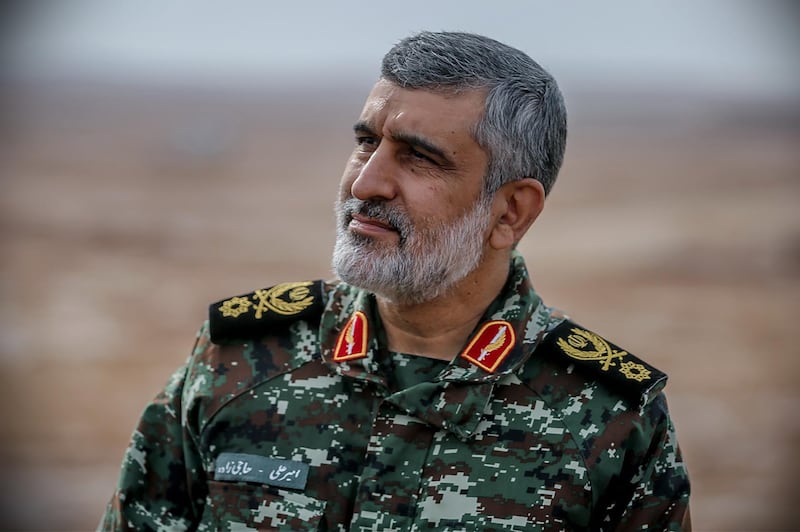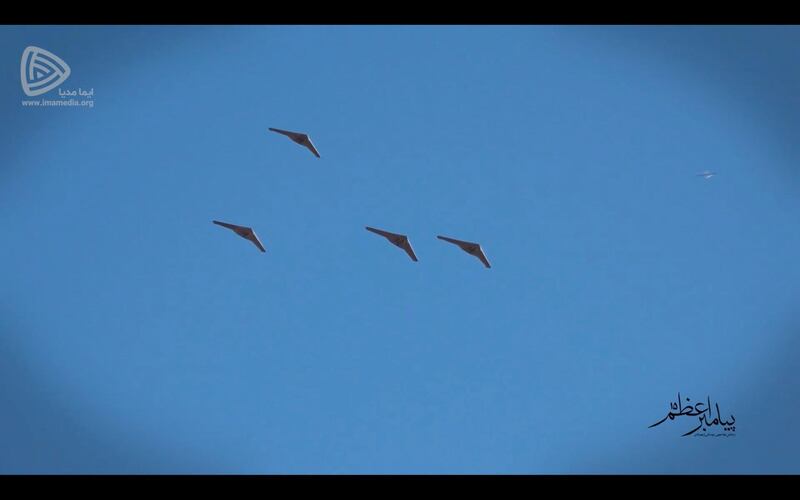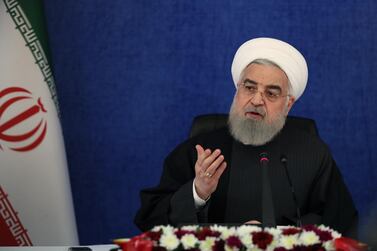Iran's Islamic Revolutionary Guard Corp launched anti-ship missiles at a simulated target in the Indian Ocean on Saturday, state television reported.
Footage showed two missiles hit a target the broadcaster described as "hypothetical hostile enemy ships" at a distance of 1,800 kilometres.
The report did not elaborate on which kind of missiles were fired.
On Friday, the IRGC launched surface-to-surface ballistic missiles and drones against hypothetical enemy bases.
Iranian state television said that drill took place in the country's vast central desert, the latest in a series of snap exercises called as tensions with the West over its nuclear programme escalate.
Footage also showed four unmanned, delta-wing drones flying in a tight formation, hitting targets and exploding.
Tensions between Washington and Tehran have increased amid a series of incidents stemming from President Donald Trump’s unilateral withdrawal from Iran’s 2015 nuclear deal with world powers.
Iran recently seized a South Korean oil tanker and begun enriching uranium closer to weapons-grade levels, while the US has sent B-52 bombers, the USS Nimitz aircraft carrier, and a nuclear submarine into the region.
In recent weeks, Iran has increased its military drills as it tries to influence president-elect Joe Biden over the nuclear accord, which he has said America may return to.
Iran also fired cruise missiles on Thursday as part of a naval drill in the Gulf of Oman, state media reported. This was monitored by what appeared to be a US submarine.
On Saturday, a news website affiliated with state television said the vessel was American.
Iran naval helicopter footage of the exercise released on Thursday showed what resembled an Ohio-class guided-missile submarine. The USS Georgia was sent to the Gulf last month.
Iran has missile range capability of up to 2,000 kilometres, far enough to reach Israel and US military bases in the region.
Last January, after the US killed a top Iranian general in Baghdad, Tehran retaliated by firing a barrage of ballistic missiles at two Iraqi bases housing US troops, injuring dozens of soldiers.
Mr Trump cited Iran’s ballistic missile programme among other issues for his decision to withdrawing the US from the nuclear accord in 2018.
When the US then increased sanctions, Iran gradually and publicly abandoned the deal’s limits on its nuclear development.
